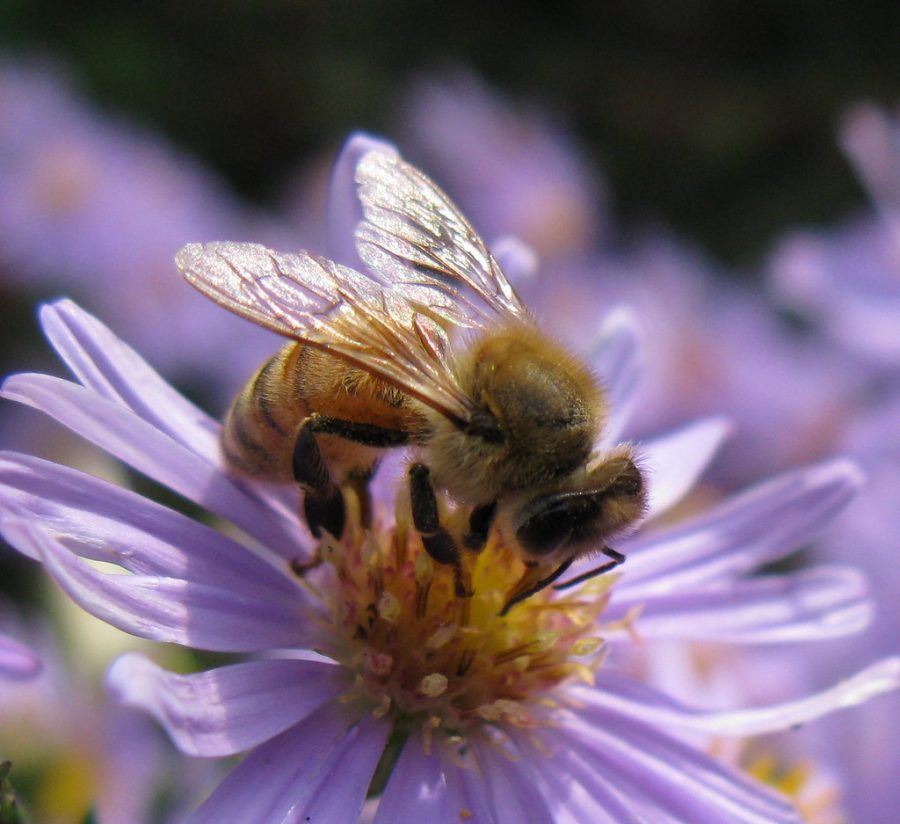The Bee Population is Still Dwindling
May 6, 2021
The news is out: honey bee numbers are in a steady decline. In 2006, the world found out that honey bees were disappearing. This was the beginning of the end for the famous pollinators.
Bees are the most effective natural pollinators. Honey bees are responsible for one out of every three bites of food and 70% of overall food pollination. These tiny creatures produce half of the world’s natural oil, fiber (such as cotton) and other raw materials. The pollination process also absorbs CO2, which counteracts climate change.
In 2006, 40% of the world’s honey bee population disappeared, seemingly out of nowhere. 30% of the world bee population has disappeared every year following. Bees did not just evaporate into thin air, so where did they go?
One major factor affecting bees in 2016 was Colony Collapse Disorder. CCD is an abnormal phenomenon where the majority of worker bees in a honey colony disappear, leaving behind a queen, plenty of food and nurse bees to take care of premature honey bees. However, Colony Collapse Disorder has not affected a colony since 2006.
The next, more likely, reason for honey bee decline is the three p’s. The three p’s include parasites, pesticides and poor nutrition. Parasites like Varroa Destructor are a big problem for bees. Varroa Destructor, or Varroa Mite, climbs onto a bee and wedges itself between the bee’s exoskeletal plates. From there, it breaks open the plates and releases a cocktail of digestive enzymes that break down the bee’s tissue into a slurry. Then, the Varroa Mite slurps the slurry up like cream of honey bee soup.
Pesticides are an effective way for farmers to protect their plants from harmful insects. What they do not realize is that pesticides are equally as harmful to honey bees as they are to other insects. When farmers spray pesticides on their crops, the formula will soak into different parts of the plant. Pesticides will seep into the pollen of a plant and act as a depressant, making the bees drowsy and incoherent.
If bees were to go extinct, there would be a ripple effect through different ecosystems. Almond plants, for example, are pollinated by bees and their hulls are used for cattle and chicken feed. If bees were to vanish, almond trees would not get the pollination they need to survive, and chicken and cattle feed would be harder to produce.
Honey bees populations are still at a steady decline, but there are still ways to help.
Grow a bee-friendly garden. Honey bees need plenty of plant life to help sustain their hive. One can plant a variety of different plants to support honey bee pollination.
Become a beekeeper and adopt a hive. This is not for everyone, however, with space and interest anyone can become a beekeeper.
Spread the word and sign a petition. Anyone can spread the word via word of mouth or social media. Greenpeace has a petition to ban bee-killing pesticides and unsustainable industrial agriculture. Reposting, sharing and signing are the easiest ways to help support honey bees.
Honey bees are still in decline. However, with a little hard work and effort, anyone can help save the bees.



